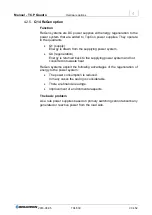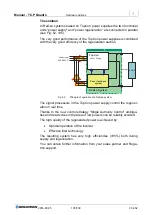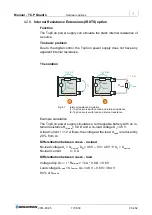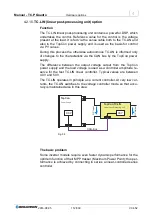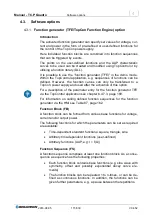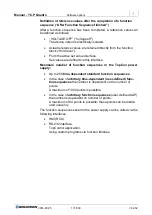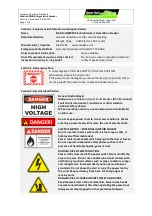
Manual - TC.P Quadro
Hardware options
2016-08-05
107/330
V04.52
4
Overload monitoring
The nominal power of the resistor is not allowed to be exceeded for an
extended time (approx. 5 s).
The resistor is sized such that at full voltage, 2
– 10-times the nominal
power of the resistor is present. This configuration therefore means that
only “cyclic operation” is allowed by means of which a pre-defined
amount of energy is dissipated at the resistor.
On reaching the amount of energy, the resistor is automatically
switched off, even if the overshoot condition is met.
This aspect should be taken into account during the design of the sys-
tem
The basic problem
The dynamic operation of loads with reactive properties (in particular
with high inductance) will result in the load behaviour only following the
TopCon control to a limited extent.
For example, the output voltage will not drop fast enough or may even
be increased.
The solution
This undesirable behaviour can be avoided if a Down Programming Unit
(DPU) is connected in parallel with the load. The unit is activated if the
output voltage/current does not follow the internal control.
Typical usage of the DPU:
In the case of a load with a storage characteristic the output voltage
may not follow the specified set values in some circumstances. In this
case the electrical energy still present in the system is converted into
heat via ballast resistor R
B
by the DPU.
During this process the amount of energy to be dissipated can be con-
trolled using the DPU switch. As a rule the DPU is operated by the mas-
ter unit in the TopCon system by means of an analogue signal.
U
Ma
x
R
DP
I
Ma
x
er
TopCo
n
X10
6
J8
R
B
Power Supply
ResPas system
X106
J8
DSP
DSP
Downprogrammer
Load
TopCon
Fig. 54
ResPas: principle of operation of Downprogrammer.












